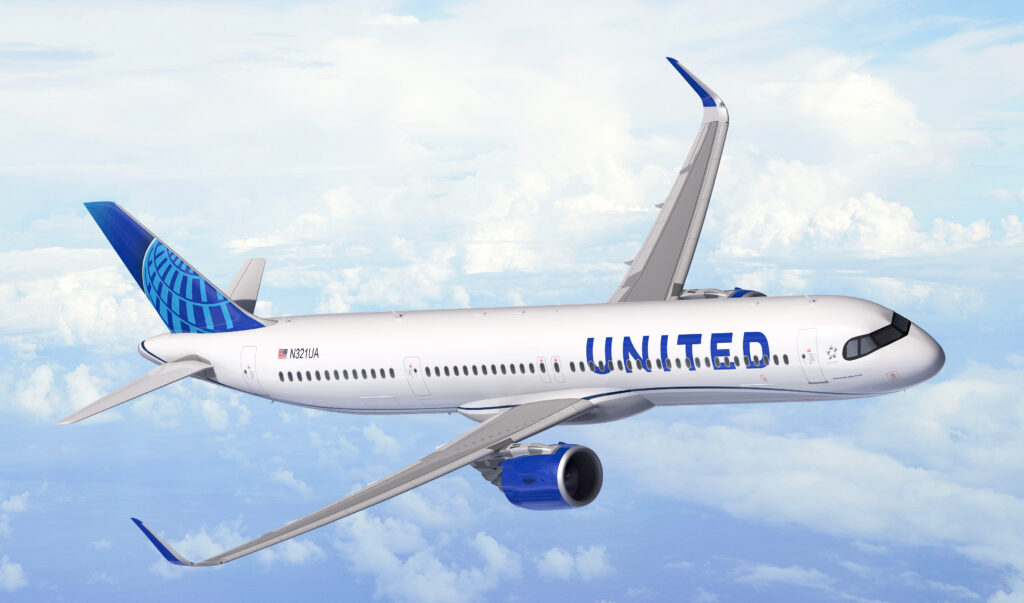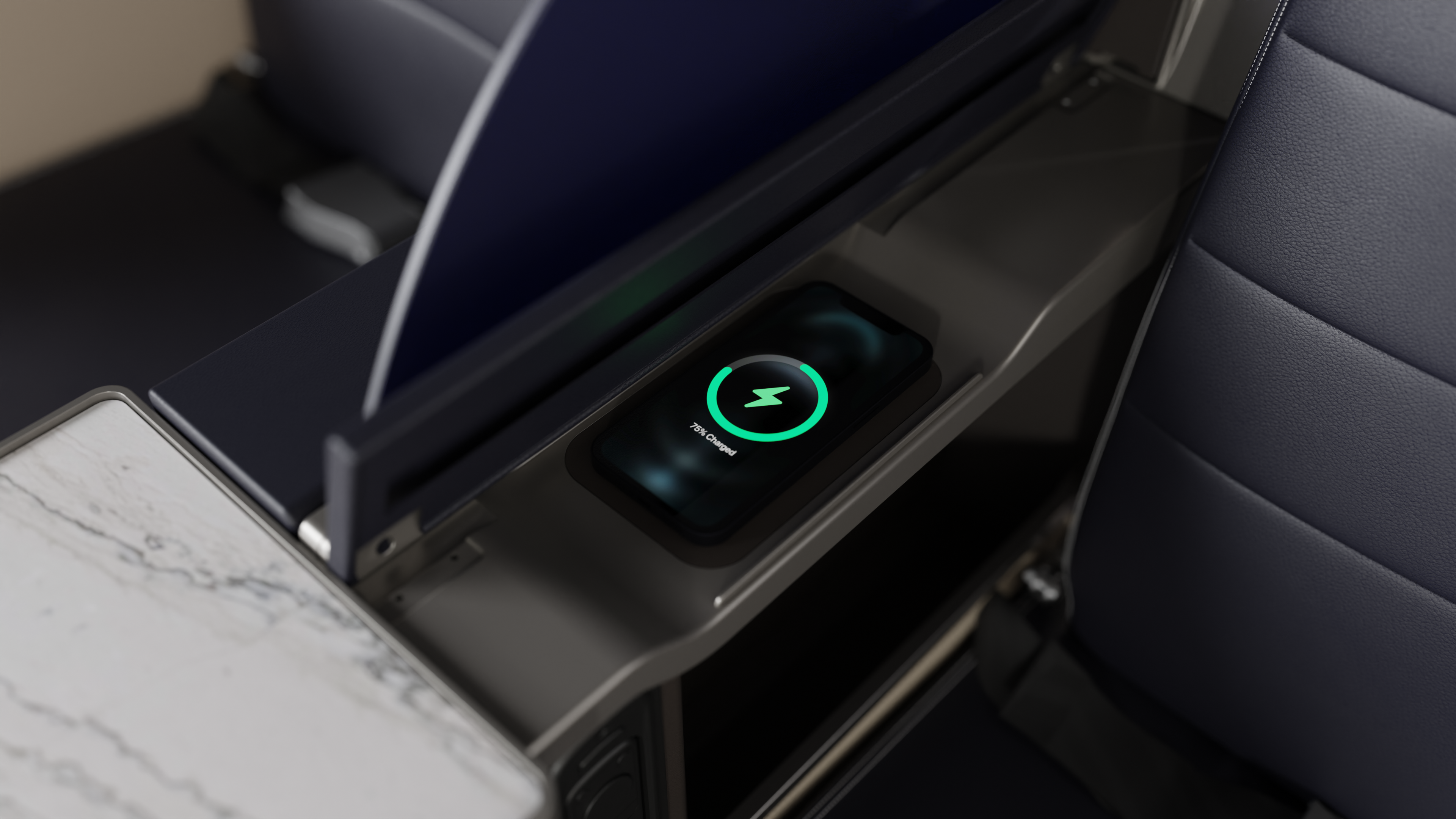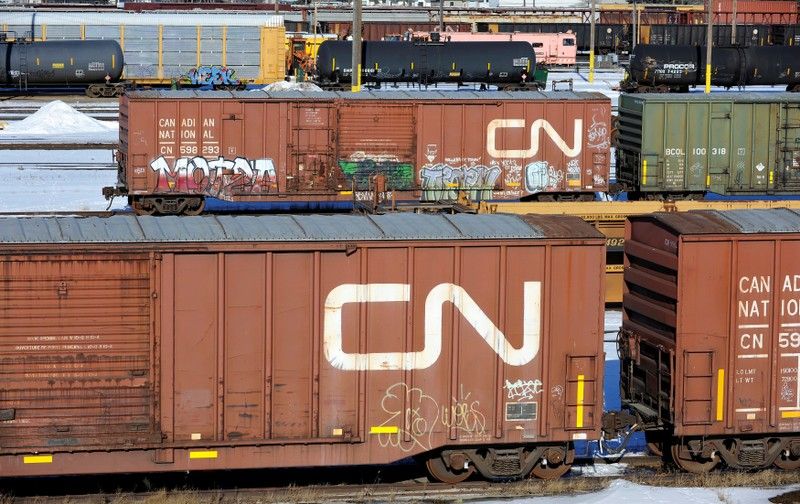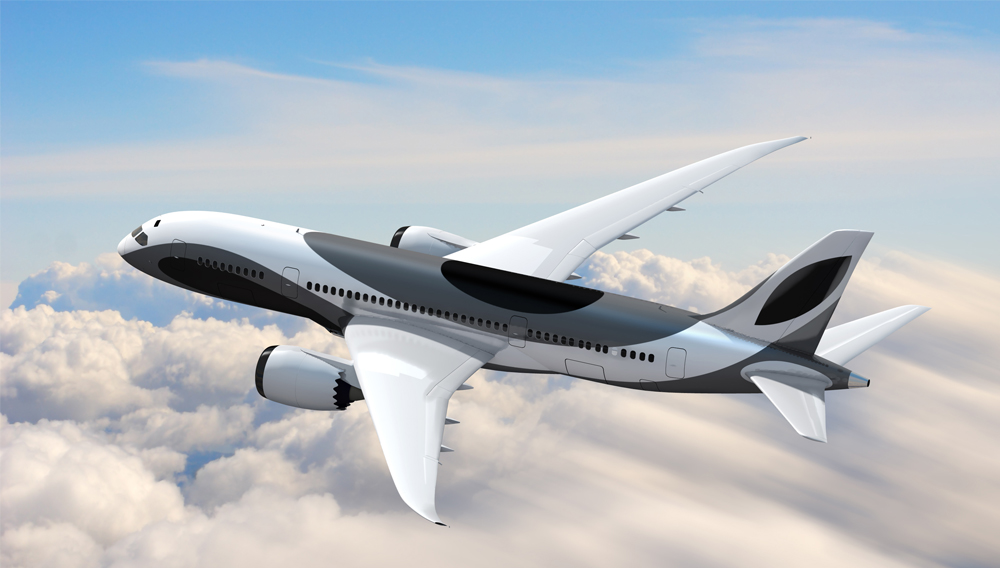Chicago, Illinois, July 12, 2023 /PRNewswire/ – United Airlines (NASDAQ: UAL) today introduced a new domestic first class seat that includes a wireless charging station in every arm rest. The new United First® seat – which also features vegan leather upholstery, 13-inch seat back screens and 18-inch tray tables, Bluetooth connectivity, privacy screens and an ergonomist-designed cushion – debuts on its first 737 this month, and customers will continue to see it rollout this summer. The airline expects the new seat to be on 200 domestic planes by 2026, including 737 NG’s, A321neo’s and 737 MAX’s.
Passengers can quickly charge their multiple electronic devices at once with three types of charging docks in each seat – wireless, AC household-style outlet and USB-C. The wireless charger is located in a compartment of the armrest to give the passenger line-of-sight to notifications and free their hands and tray table.
A growing number of customers prefer a two-screen experience where they use a personal device and a seatback screen simultaneously, so United is upleveling the experience. The 13-inch, high-definition screens are Bluetooth capable and include a remote for those unable to reach the touch screen.
Designated space for devices, food, drinks and more make it easier for passengers to enjoy the full experience. A larger, 18 x 8.5 inch tray table features a built-in tablet holder and enough space for most standard laptops. With authentic Italian quartzite cocktail tables and bottle holders between each seat, passengers don’t have to balance gadgets, drinks and snacks on one tray table.
In the large seats upholstered with vegan leather, passengers will experience more privacy with a 11 x 19-inch divider between neighbors, winged headrests and tray tables that deploy from outer armrests to reduce passenger contact. The seat features a 5-inch recline range, adjustable aisle arm rest that lowers completely and an ergonomist-designed seat cushion that sits 1-inch lower to accommodate a wider variety of heights
In addition to installing the new seats, United will update existing domestic first class seats on more than 200 planes by 2025. United First seats on select 737, A319 and A320 aircraft will be redesigned with new seat cushions, vegan leather upholstery and winged headrests.
The announcement marks United’s first update to domestic first class seat design since 2015. The new United First seat was built with a team of experts, including United’s engineering and inflight teams, University of Michigan biomechanics researcher Dr. Matthew Reed and design firm Priestman Goode.







